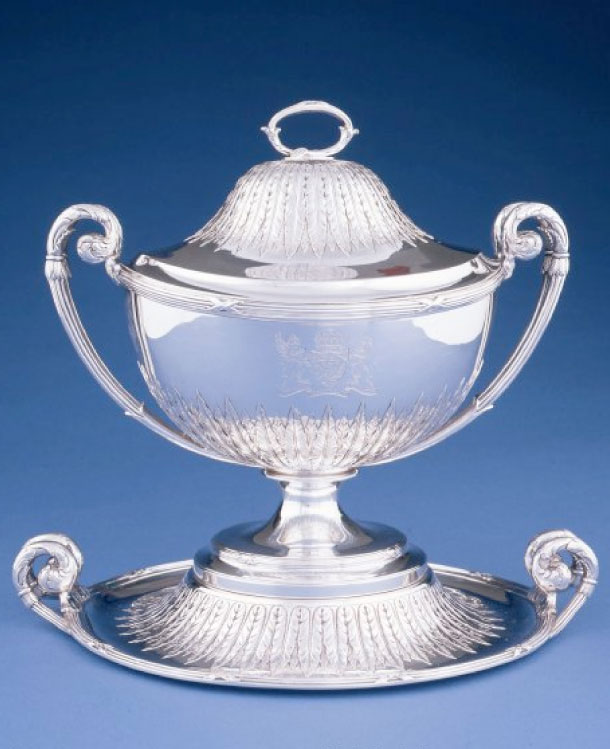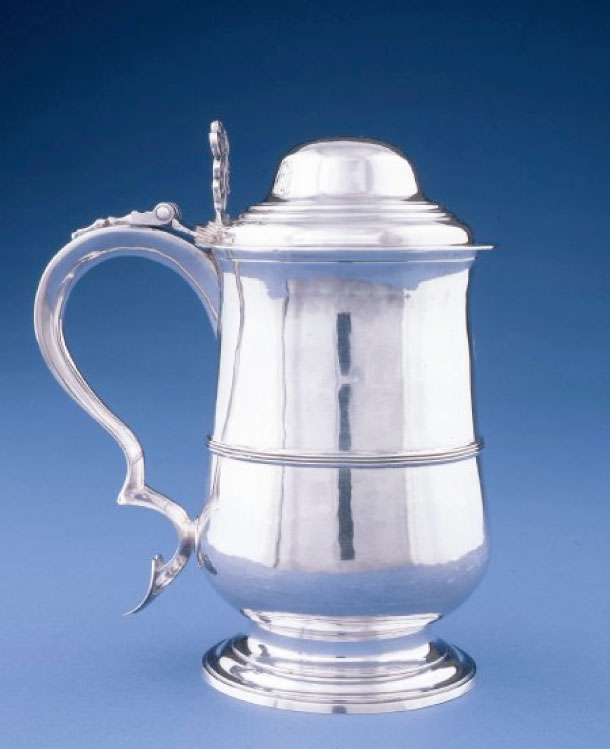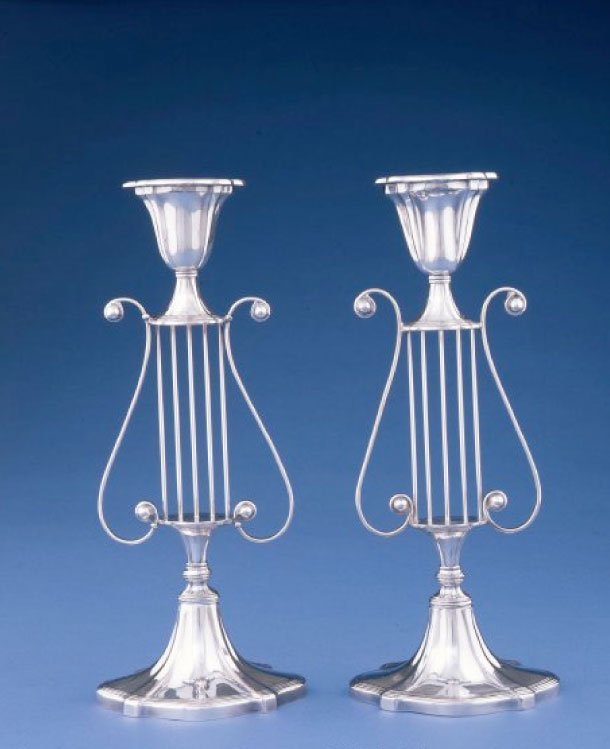
Most of the works in the British Georgian Silver Collection were donated to the Museum by the late Harriet and Thomas Gibbons. From the mid-1920s until 1959, Mr. Gibbons was the publisher of the Laurel Leader-Call, and Mrs. Gibbons was the editor. Both had a passion for silver which resulted in a magnificent and well-focused collection of silver luxury goods, most used in relation to English “high tea.”
The term “Georgian” refers to the period between 1714 and 1830 when four King Georges in a row ruled England. This time span saw a change in style; during the early 18th-century, English silver featured the abundant ornamentation of the Baroque and Rococo periods. By the end of the Georgian period, a restrained Neo-Classical style held sway, inspired by Classical forms and designs from ancient Greece and Rome.


| Rome, in particular, was wildly popular at this time because of the discovery and ongoing excavation of Pompeii and Herculaneum beginning in the early 1700s. The excavation was yielding hundreds, maybe thousands, of objects which provided modern Europe with a new design vocabulary. The Neo-Classical style had become popular in France in the 1770s, along with revolutionary ideas about humanism and democracy. The style carried its own meaning: Greek Democracy and the Roman Republic were seen by French (and American) revolutionaries as the precursors to modern democracies. Ironically, the style crossed the English Channel to the British Empire and appears to have lost its political content. George III was King of England during the American Revolution; he was certainly no revolutionary, but he adopted and promoted the Neo-Classical aesthetic during his reign.
|
|
| Today we think of high tea and tea-drinking as quintessentially English activities, but in fact, tea was an import from England’s colonies in China and Southeast Asia. Tea was an expensive luxury, costing the equivalent of twenty dollars per pound in the mid-17th-century. The caddies, teapots, spoons, trays and other implements were likewise a luxurious accompaniment to the ceremonial drinking of the exotic beverage with an assortment of light snacks. The English were a wealthy people during this period of colonization and exploration, and their taste for silver goods led to a true flowering of the silversmith’s art during this period. In 1727, the year George II ascended the throne, there were 300 registered silversmiths in London alone. And this at a time when London was considerably smaller than it is today – no more than 500,000 in a city that now holds more than seven million. | |

The LRMA Silver Collection includes works by the best-known silversmiths of the age, including Paul Storr, Hester Bateman, and Paul Lamerie. Hester Bateman was a very successful woman in a profession practiced mainly by men. She learned the trade from her husband and then took over the business after his death. She and five of her children produced some of the most sought-after silver of the period. Paul Lamerie, in addition to being a premier silversmith during the reign of George II, helped enact the Plate Offenses Act of 1738, which was created to curb fraud within the metalworking trade. The Act required that all works of silver and gold, except jewelry, be marked with the first initial and surname of the maker. The sign on the gallery wall shows hallmarks of important silversmiths. Today we can use hallmarks to identify artists and, frequently, to determine the dates of the artwork. Sometimes there are multiple marks, referring to artists involved in different phases of silver production, or even to the distributor.










